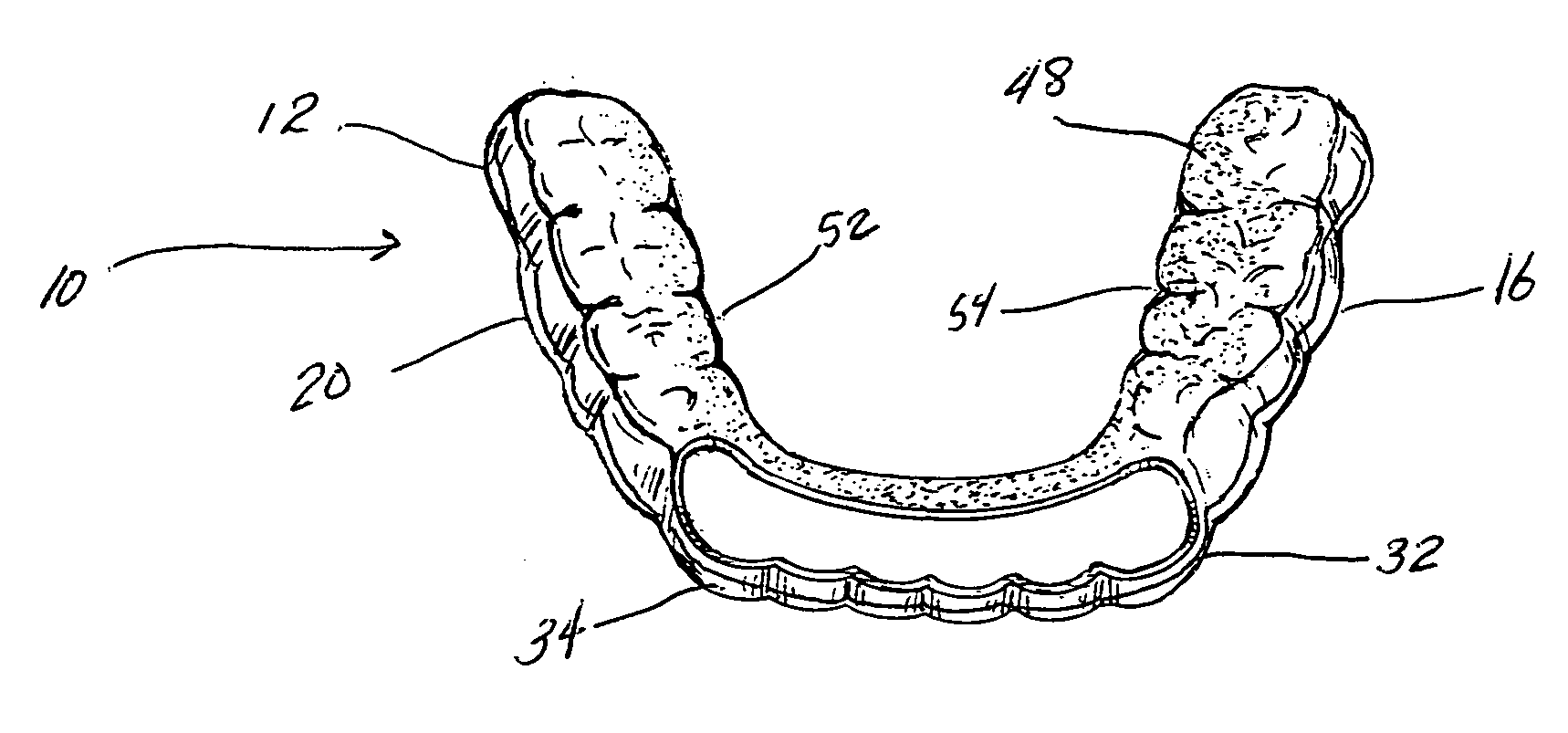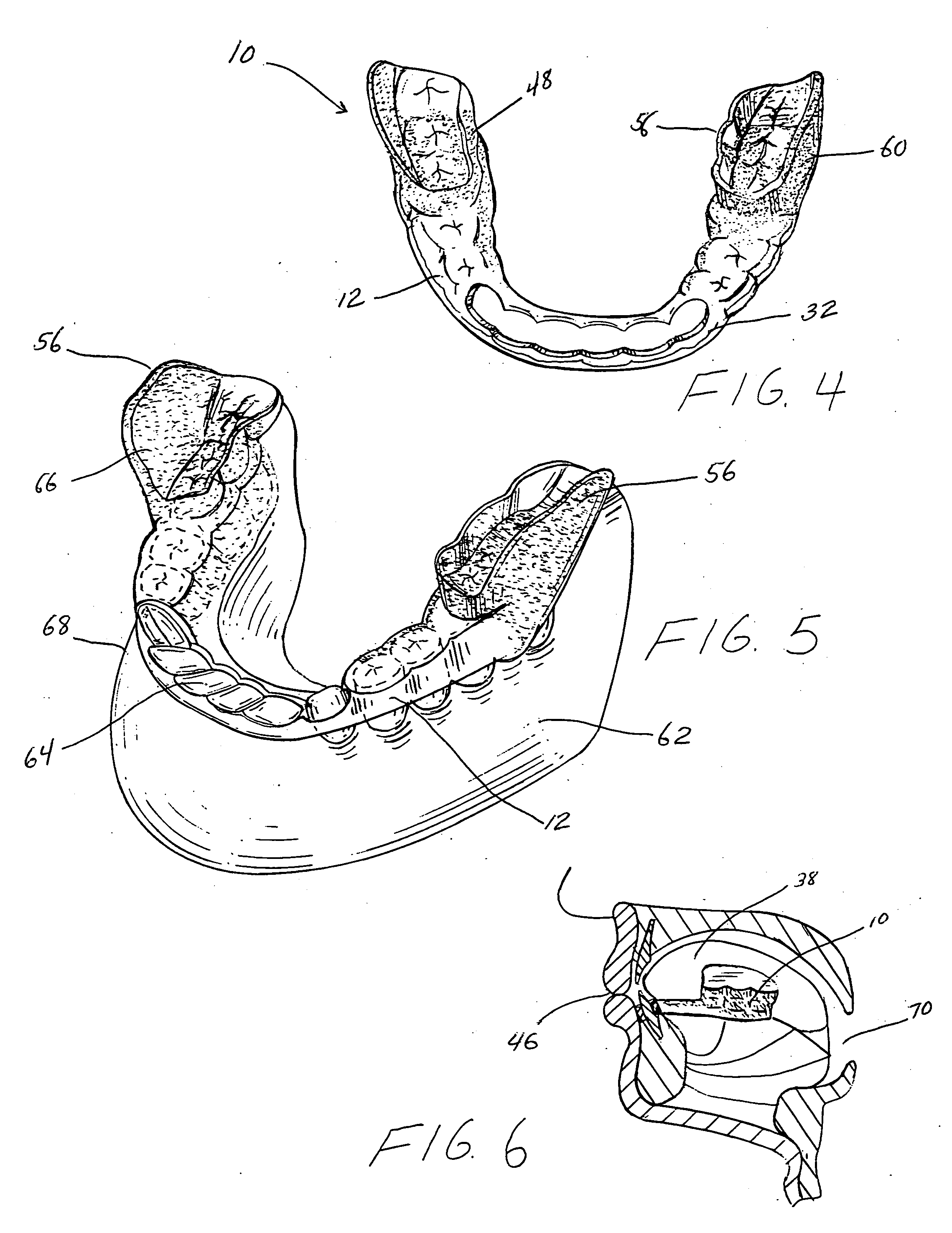Dental orthotic for management of impaired oral functions
a technology of oral function and dental orthotics, applied in the field of dental orthotics, can solve the problems of no known oral orthotic design, and achieve the effects of reducing the need for body compensation, improving oral function, and relieving neuromuscular responses and autonomic nervous system dysfunctions
- Summary
- Abstract
- Description
- Claims
- Application Information
AI Technical Summary
Benefits of technology
Problems solved by technology
Method used
Image
Examples
first embodiment
[0030] Referring to FIGS. 1 and 2, in a first embodiment a dental orthotic 10 comprises a mandibular orthotic 12 which is configured to engage a lower arrangement of teeth, or lower dentition 14, of a user's mouth. The mandibular orthotic 12 includes a first side portion 16 which is positioned on a first side 18 of the lower arrangement of teeth of the user's mouth and a second side portion 20 which is positioned on a second side 22 of the lower arrangement of teeth of the user's mouth. The first side portion 16 and the second side portion 20 may be placed preferably over molars 24, bicuspids 26, cuspids 28 and incisors 30 in the lower arrangement of teeth 14. However, it is understood that the first side portion and the second side portion are designed to conform to at least one tooth on each side of the user's lower arrangement of teeth.
[0031] The mandibular orthotic 12 is preferably made of a pliable material, such as plastic, which can be molded to the user's teeth when being ma...
second embodiment
[0055] Referring to FIGS. 4 to 6, in a second embodiment the dental orthotic 10 of the present invention may also include a maxillary orthotic 56 which is affixed to an upper surface 58 of the mandibular orthotic 12. The maxillary orthotic 56 includes a first side portion 60 which is positioned on a first side 62 of an upper arrangement of teeth, or upper dentition 64, of the user's mouth and a second side portion 66 which is positioned on a second side 68 of the upper arrangement of teeth 64 of the user's mouth. Preferably, the first side portion 60 and the second side portion 66 are placed over an outer surface of the upper arrangement of teeth and also extend over a biting surface of the teeth. The maxillary orthotic 56 engages the most posterior two or three teeth of the upper arrangement of teeth 64. Depending on the teeth present in the user's mouth, the teeth covered are typically a second bicuspid, a first molar and a second molar. However, it is understood that the first si...
PUM
 Login to View More
Login to View More Abstract
Description
Claims
Application Information
 Login to View More
Login to View More - R&D
- Intellectual Property
- Life Sciences
- Materials
- Tech Scout
- Unparalleled Data Quality
- Higher Quality Content
- 60% Fewer Hallucinations
Browse by: Latest US Patents, China's latest patents, Technical Efficacy Thesaurus, Application Domain, Technology Topic, Popular Technical Reports.
© 2025 PatSnap. All rights reserved.Legal|Privacy policy|Modern Slavery Act Transparency Statement|Sitemap|About US| Contact US: help@patsnap.com



